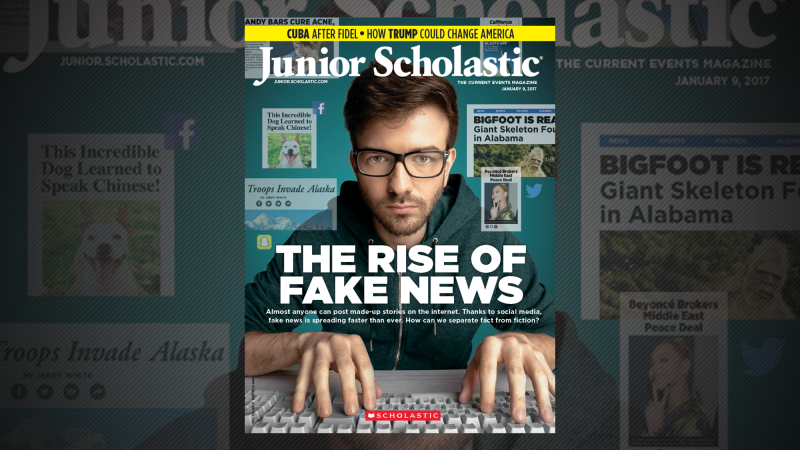It’s no secret that the topic of fake news is widely prevalent in our culture today, but while adults grapple with how to discern the credible from the false stories, where does that leave our students?
As more and more PreK–12 educators across the country find themselves having to address this issue in the classroom, Scholastic Classroom Magazines Junior Scholastic (for grades 6–8) and The New York Times Upfront (for grades 9–12) recently tackled fake news with cover stories about the history of made-up news, how companies are currently reacting to this issue, and a list of helpful tips for students, teachers, and parents to spot false information.
HOW TO SPOT FAKE NEWS:
- Be skeptical: Just because you see an article online, don’t assume it’s factual, even if a friend shared it with you.
- Verify: Make sure that what you’re reading—and thinking of sharing—was published by a reputable source.
- Look for other clues: Scrutinizing the sources cited in articles and even the ads on the page can reveal a hidden agenda behind a website.
- Get help: Independent verification can often confirm whether something widely shared is true. Nonpartisan fact-checking sites like Factcheck.org and PolitiFact.com point out untruths in the news. Teachers and family can also help.
Jane Nussbaum, Executive Editor of Junior Scholastic, and Ian Zack, Executive Editor of The New York Times Upfront, took to the airwaves to speak more in depth on the importance of media literacy and how fake news is affecting the classroom. Listen to a few of their interviews:
- WJRW-AM, Sound Off! West MI
- WCHE-AM, Perspectives on Parenting
Over on our education blog, edu@scholastic, Editor-at-Large at Scholastic, Suzanne McCabe, talked with Jim Warren, chief media writer for poynter.org and national political correspondent for U.S. News & World Report, to get a veteran journalist’s perspective on the current media landscape.
Warren explains that the first step for students is to verify things they hear or read. “The reason we have journalism,” Warren says, “is because it’s very difficult many times, and always has been, to figure out: What are rumors? What are facts? What are deceptions? And what are things that are just plain mistakes?”
Read the full post, “The Media: Separating Fact from Fiction,” here: http://edublog.scholastic.com/post/media-separating-fact-fiction



